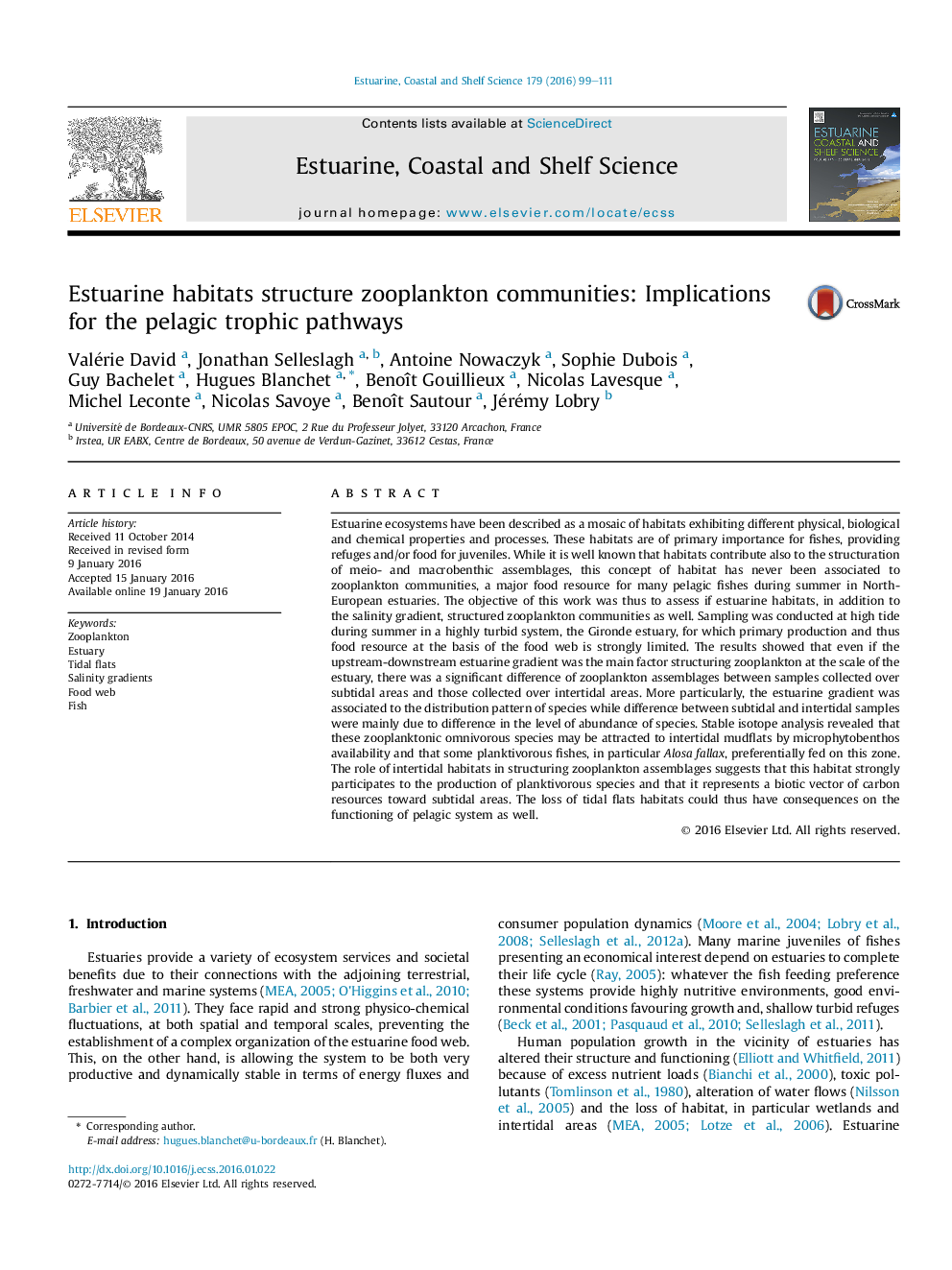| Article ID | Journal | Published Year | Pages | File Type |
|---|---|---|---|---|
| 4539196 | Estuarine, Coastal and Shelf Science | 2016 | 13 Pages |
•Zooplankton community structure according to estuarine gradient and intertidal/subtidal position was studied.•Both factors are significant in discriminating summer zooplankton assemblages.•Intertidal habitats exhibited higher taxa richness and abundances of the main plankton taxa.•Stable isotope investigation suggest that most planktivorous fishes fed preferentially on intertidal zooplankton assemblages.•This study highlights the importance of intertidal habitats for estuarine zooplankton and pelagic food web in estuaries.
Estuarine ecosystems have been described as a mosaic of habitats exhibiting different physical, biological and chemical properties and processes. These habitats are of primary importance for fishes, providing refuges and/or food for juveniles. While it is well known that habitats contribute also to the structuration of meio- and macrobenthic assemblages, this concept of habitat has never been associated to zooplankton communities, a major food resource for many pelagic fishes during summer in North-European estuaries. The objective of this work was thus to assess if estuarine habitats, in addition to the salinity gradient, structured zooplankton communities as well. Sampling was conducted at high tide during summer in a highly turbid system, the Gironde estuary, for which primary production and thus food resource at the basis of the food web is strongly limited. The results showed that even if the upstream-downstream estuarine gradient was the main factor structuring zooplankton at the scale of the estuary, there was a significant difference of zooplankton assemblages between samples collected over subtidal areas and those collected over intertidal areas. More particularly, the estuarine gradient was associated to the distribution pattern of species while difference between subtidal and intertidal samples were mainly due to difference in the level of abundance of species. Stable isotope analysis revealed that these zooplanktonic omnivorous species may be attracted to intertidal mudflats by microphytobenthos availability and that some planktivorous fishes, in particular Alosa fallax, preferentially fed on this zone. The role of intertidal habitats in structuring zooplankton assemblages suggests that this habitat strongly participates to the production of planktivorous species and that it represents a biotic vector of carbon resources toward subtidal areas. The loss of tidal flats habitats could thus have consequences on the functioning of pelagic system as well.
Graphical abstractFigure optionsDownload full-size imageDownload high-quality image (356 K)Download as PowerPoint slide
